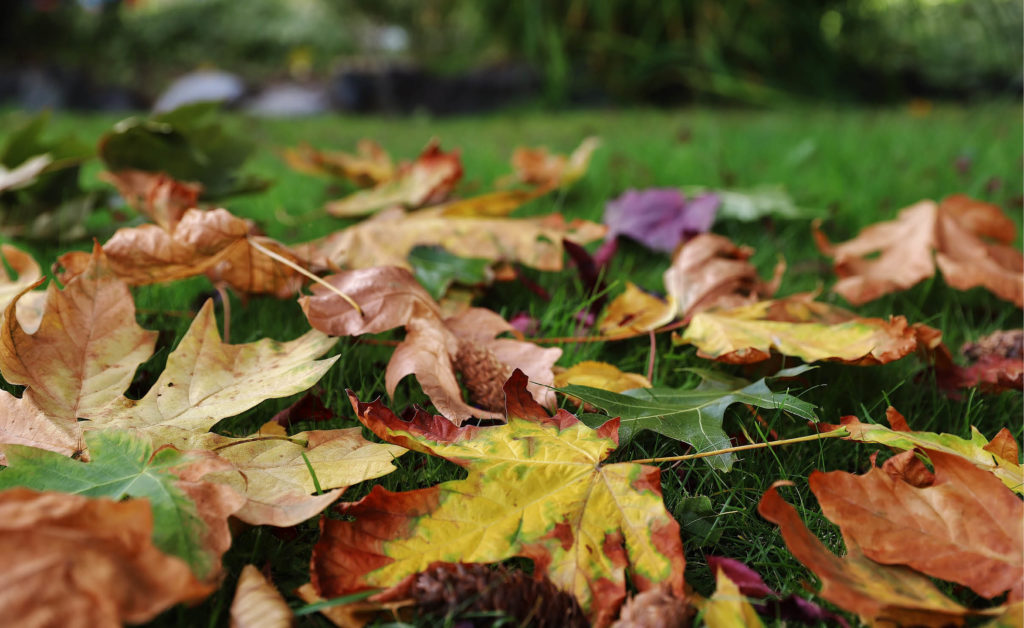by Tina Kelly | photo by Brianne Hamlyn
Summer is now just a memory. We’ve said goodbye to hot sunny days, lush flower gardens and peak season for locally grown produce. With the latter two in mind, let’s all say a collective season ender thank you to pollinators for the fruits of their labour. What would be an appropriate gift of gratitude? The answer, it turns out, is easy: do nothing.
When it comes to leaves, that’s right, do nothing. Just relax and ignore the rake and Husqvarna. No backbreaking yard work, no gassing up the leaf blower, no bagging up the leaves and setting them curbside. One of the best gifts you can give bees, butterflies, moths and other pollinating insects is to leave fallen leaves right where they landed.
It’s hard for some to imagine. Leaves strewn about the yard might be seen as a nuisance, as a sure sign of laziness, or as a blight on our upstanding reputation with the neighbours. But messy ground cover provides critical hibernating habitat for a wide range of pollinators. Over the winter our six-legged friends need shelter and sanctuary. Don’t think of insects as annoying, think of them as beneficial and necessary. British Columbia has 483 known species of native bees and almost 200 species of butterfly; they are key components of a diverse and healthy environment. More than 70% of plant life depends on pollinators. Pollinators pollinate but they are also prey for birds and other wildlife and loss of suitable habitat is a substantial threat to pollinator populations.
Along with doing nothing about the leaves, do nothing with dead flowers and plants, especially those with hollow stems. Some solitary pollinators nest inside stems or other cavities.
Of course there are a few tasks you can do that give pollinators a helping hand through fall and winter:
• Provide small patches of bare ground for native bees that nest in the dirt.
• Provide small amounts of water for ground nesting bees to create nest mud.
• Mow grass higher than normal and/or leave some patches of grass completely unmown.
• Plant more native vegetation – before winter sets in – and choose those that bloom in early spring.
• Create messy rock piles using rocks of various sizes.
If you can’t begin to imagine a yard littered with leaves, concentrate small leaf piles around the edge of the yard, in garden beds or at the base of trees and shrubs. Covering the leaves with sticks and branches will prevent them from blowing away. An added bonus are the nutrients returned to the soil as the leaves break down.
Rarely is the advice to be messy and do nothing. Put your feet up and embrace it.




